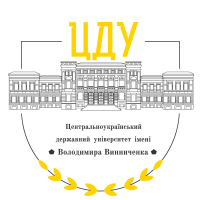LEXICAL SPECIFIC FEATURES OF LEGAL TERMS TRANSLATION FROM FRENCH AND ITALIAN LANGUAGES INTO UKRAINIAN
DOI:
https://doi.org/10.32782/2522-4077-2024-208-60Keywords:
translation, communicative competence, legal terminology, non-equivalent vocabulary, target language, linguistic contextAbstract
The article is devoted to the issue of transferring the meaning of legal terms when translating from French and Italian languages into Ukrainian. The author divides legal terms into three groups: terms that have a direct correspondence in the target language, terms – variant correspondences and non-equivalent vocabulary. Various ways of translating legal vocabulary are given. The author concludes that for adequate translation, in addition to knowledge of two languages and familiarity with the subject (jurisprudential competence), a prerequisite is preparation in the field of translation theory and possession of practical translation skills. The point is that it is always necessary to assess the boundary beyond which cultural substitution begins. Indeed, when choosing an equivalent, the translator will need to consider a host of factors: the specific field, the context, the situation, the target audience, and even the requirements (or known expectations) of the client. And an important factor is the divergence between legal systems. The translator must be aware of what he or she is doing and for whom, where clarifications will be needed, where he or she can use a more general concept, and where generalisation, description, simplification will be unacceptable due to the specifics of the text. The following procedures are necessary: comparative study of the subject area; consideration and evaluation of all significant factors, the pros and cons of a given decision, risks. The written translation of legal terms from French and Italian languages into Ukrainian might be conservative and dynamic at the same time. Τhe problem of choosing an adequate correspondence when translating legal terms from one language into another, in particular, from French and Italian languages into Ukrainian, remains one of the problems of translation theory that require detailed study. The considered examples in the article allow us to conclude that the choice of an acceptable translation variant is determined by the presence or absence of an equivalent in the target language.
References
Boase-Beier Jean. A Critical Introduction to Translation Studies. Continuum, 2011. 187 р.
Chomsky Noam. The Logical Structure of Linguistic Theory. MIT, 1955. 919 p.
Gouadec Daniel. Le traducteur, la traduction et l'entreprise. Afnor Gestion, 1991. 181 p.
Laviosa Sara, Pagano Adriana. Textual and Contextual Analysis in Empirical Translation Studies Springer Singapore, 2017. 164 p.
Malmkjaer Kirsten (ed.). The Routledge Handbook of Translation Studies and Linguistics. Routledge, 2018. 466 p.
Marais K. (ed.) Translation Beyond Translation Studies. London, New York, Oxford: Bloomsbury Academic, Bloomsbury Publishing Plc, 2023. 252 p.
Millán Carmen, Bartrina Francesca. The Routledge Handbook of Translation Studies.Routledge, 2012. 592 р.
Munday Jeremy, Zhang Meifang (eds.). Discourse Analysis in Translation Studies. John Benjamins Publishing Company, 2017. 151 p.
Olohan Maeve. Introducing Corpora in Translation Studies Routledge, 2004. 232 p.
Osimo Bruno. Manuale Del Traduttore. Clearway Logistics Phase 1a, 2011. 385 p.
Palumbo G. Key Terms in Translation Studies Bloomsbury Academic, 2009. 222 p.
Ricoeur P. Sur la Traduction. Bayard, 2002. 64 p.
Online dictionary of French language https://www.larousse.fr/dictionnaires/ francais
Online dictionary of Italian language https://dizionari.repubblica.it/italiano.html
Online dictionary of Ukrainian language https://slovnyk.ua/








